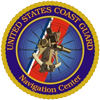

Civil GPS Service Interface Committee
Open Issues
This page provides a running compilation of unresolved issues raised during CGSIC meetings.
Where issues have been resolved, we indicate the U.S. government source of the response in parentheses.
Q. Publish revised minimum GPS performance specifications. Issue is that the taxpayers are paying for GPS non-DoD upgrades but the public (read that as taxpayers) can only use at their own risk. For instance, the incorporation of the NGA receivers to the monitoring network has provided both availability and accuracy improvements but, since the improvement is not documented in the SPS-PS, the use of that benefit should not be used in developing related system performance. If the constellation was at the bare minimum of the current SPS-PS, the WAAS system would be at risk. The constellation has much greater capability for civil use than the level defined in the SPS-PS. Why not document it as a GPS capability? The same thing happening with regard to increased capability offered by the expanded 24 constellation. So why is the Air Force not documenting the capability?
A: Open
Q. Improve accuracy (e.g. area of impact, time window) of NANU's. NANUs generally cover a window of opportunity for maintenance that describes a worst case scenario. Maintenance periods frequently indicate a high HDOP/PDOP situation and warnings are generated and published. Often, maintenance is completed in a fraction of the allotted time window even before the HDOP/PDOP event occurs. Is it possible to narrow those windows to more realistic time periods?
A. Over years of experience, the vehicle engineering team at the U.S. Air Force's Second Space Operations Squadron in Colorado Springs has developed maintenance time schedules based on a worst case scenario of the amount of time it CAN take for each event. Rather than risk continued maintenance beyond specified windows, the vehicle engineers work to complete maintenance within the allotted time specified by NANUs. To assist with operations planning, NANUs are published in case maintenance actually does cause a high HDOP/PDOP event but all attempts are made to conduct maintenance in between any event that would present unsatisfactory service anywhere in the world. (2SOPS)
Q. Improve transparency of CGSIC action items (e.g. status, action taken, resolution). These issues are brought up at CGSIC and aren’t heard of until the next year. Although work is done, the concerned never hear how the issues were resolved.
A. This web page was established to address the comment. Answers to questions will be posted as they are received from the GPS community. (CGSIC Secretariat)
Q. Should critical infrastructure POC's be notified of projected periods of high HDOP?
A. High HDOP advisories are generated and published by NAVCEN when indicated by modeling of satellite maintenance or unscheduled outages. Also, these advisories are sent to the CGSIC list server to notify all CGSIC members and through e-mail generated by the U.S. Coast Guard Navigation Information Service (NIS). Concerned or interested persons or agencies can subscribe to either service to be warned of predicted service disruptions. (CGSIC Secretariat)
Q. What is the cost estimate for GPS-IIF launch?
A: Although the satellites change in price due to the nature of the contracting process, the GPS Directorate is comfortable averaging the satellites at about 120 million dollars each and the Evolved Expendable Launch Vehicles, the rockets, at $200 million apiece. To put these costs into perspective, however, consider a recent European study estimating that the economic benefit of worldwide GNSS equipment and services will reach close to 300 billion dollars a year by 2025, not to mention the worldwide military, civil, and humanitarian benefits.
Q. What are the international trade implications of countries that limit import of GNSS equipment based on compatibility with country sponsored GNSS?
A: The United States supports free trade and open markets with regard to GNSS equipment, and we encourage other nations to do the same. Under the World Trade Organization, the United States and other WTO members are bound to uphold rules designed to prevent trade discrimination through import duties, standards, regulations, etc. These rules apply to GNSS equipment markets. To address trade issues with non-WTO members, such as Russia, the United States has held bilateral discussions and proposed formal agreements. (DOC)
Q. Is CGSIC the appropriate body to address backup PNT systems? Does it depend on the need and/or proposed solution?
A: Although CGSIC happily invites presentations of research into alternate PNT systems in the Subcommittee meetings, the Department of Homeland Security has been tasked to address the “GPS back-up” question. They are conducting ongoing studies and research but have not yet reached a decision. DHS reports each year on their progress in the CGSIC plenary session. (DHS)
Q. When will NAVCEN provide predictive GPS info on its website?
A: Ongoing development (NAVCEN)
Q. NAVCEN's website is oriented toward equipment operators. Will NAVCEN adapt website to address more technical focus (e.g. GPS-IS-200 questions) from lead users and manufacturers?
A: NAVCEN’s Navigation Information Service (NIS) accepts questions from all over the world on a daily basis. Questions range from the very basic to highly technical inquiries from scientists and software developers that require the assistance of spectrum and satellite engineers. Very technical questions can take some time as technicians fit the inquiry into their workload, conduct a thorough analysis (often working directly with the inquirer), and develop proper responses. These responses go back to the NIS for return to the source. (NAVCEN Operations)
Q. What would be the cost of implementing IDM world-wide?
A: Open
Q. Should we believe the contents of the GAO report?
A: Press Statement in Response to 2010 GAO Report on GPS Program (National Coordination Office for Space-Based Positioning, Navigation, and Timing)
 Official U.S. Government information about the
Official U.S. Government information about the





